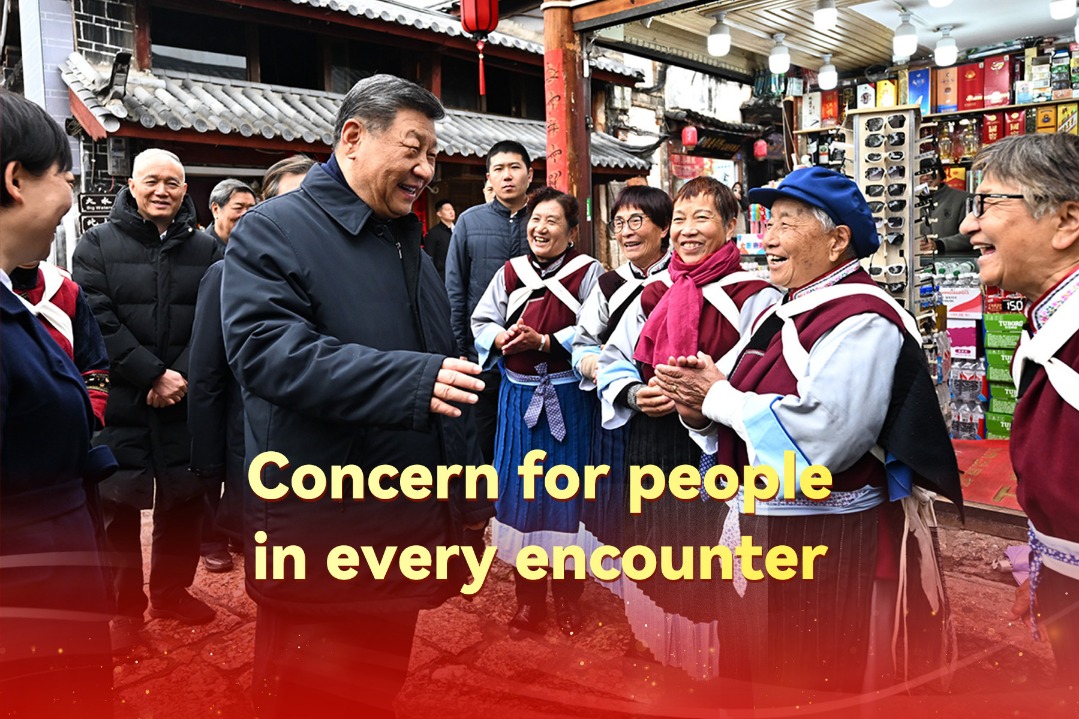It takes a village

A Chinese expert on African art and his wife, longtime residents of Tanzania, fulfill their dream of opening a showcase for the continent's culture in Beijing
Standing in the auditorium of the new African Village in Beijing, listening to professor Li Songshan delivering a speech in perfect Kiswahili, it's almost hard to believe the man at the microphone is Chinese and not African.
Li, 74, not only has mastered the language but also knows some idiom, and used it in his speech welcoming Tanzanian President Jakaya Kikwete, the guest of honor at the village's official opening on Oct 22.
The African Village, which occupies some 7,000 square meters, is the realization of a dream for Li and his wife, Han Rong, who spent decades in Tanzania. It's about 20 kilometers northeast of downtown Beijing at Songzhuang, a famous artist community in Tongzhou district.
The dream started taking shape nine years ago, and, in 2007, they bought land in Songzhuang and put their life savings toward the project, which had a total cost of some $10 million.
Kikwete was visibly overjoyed at the showcase for African culture in China.
"The village has great importance to Africa it markets artifacts, and teaches language and traditional dance all are shown here," he said. "Here one feels at home far from home. I haven't seen many artifacts from Tanzania in China other than here."
Kikwete was in China from Oct 21 to 26 for a state visit at the invitation of Chinese President Xi Jinping. It was Kikwete's second official visit to the country as president of Tanzania.
Kikwete says Tanzania will give a helping hand to the village, starting with finding qualified Kiswahili teachers for it.
Kiswahili dominated the opening events, attended by about 100 guests, from the gold-plated plaque noting Kikwete's presence to banners welcoming him and his delegation. While Chinese also was used, the presence of one of Africa's major indigenous languages lent an air of cultural validation and provided an especially warm embrace for guests from East Africa and some parts of southern Africa.
Kiswahili, the language associated with Swahili culture, is used as an official or national language or lingua franca for millions of Africans in Tanzania, Kenya, Burundi, the Democratic Republic of Congo and Uganda, and as a minority language in Rwanda, Mozambique, South Sudan and Comoros.

The village has a two-floor auditorium for African officials and scholars and Chinese experts on African studies to give speeches about Africa's economies and cultures. The auditorium will also function as a museum with an exhibition of African arts, and it has a movie theater to show African films and a restaurant featuring African-style dishes.
The auditorium is the tallest building at the compound and is surrounded by four buildings, with uses that include an African art research center run in cooperation with universities in Beijing. They are built in the style of round houses often seen in East Africa.
The village has a clinic of volunteer doctors to serve Africans living in Beijing, and a publishing house for Chinese scholars and speeches delivered at the auditorium. It also will help market African tourism to Chinese people.
The village can be reached by taking subway line 6 bound for Cao Fang station and then bus 813 bound for Yanjiao. There is no fee to enter the village.
"It is not our personal property but a belonging of China, of future generations devoted to promoting African culture and art and China-Africa friendship," says Li, who also is president of the Makonde Art Association of Tanzania.
The art housed by the village ranges from carvings from West Africa to paintings from the east and south to arts from the north. But the collection leans heavily toward Tanzania's Makonde carvings and Tinga Tinga paintings.
Makonde is a tribe that resides in the south of Tanzania near Mozambique, and they are famous for wooden carvings from the African blackwood tree mpingo in Kiswahili that takes about 100 years to mature.
The Tinga Tinga painting style of bright colors was developed in Dar es Salaam, Tanzania, and later spread to most of East Africa. It is a form of impressionism often featuring the animals of East Africa. It is named after its founder, painter Edward Said Tingatinga, who was born in Mozambique but moved to Tanzania with his family.
Li said they were proud and very touched that Kikwete had attended the opening.
Li and his wife spent almost half of their lives in Tanzania. They first arrived as Chinese diplomatic officials in the 1960s. In the 1980s, they were recalled home.
But after a short stay, in 1990, Li and Han quit their steady jobs in governmental ministries and left China for Tanzania with $8,000 in their pockets. They opened a Makonde and Tinga Tinga arts workshop, and the money from the business helped them build the village.
Li also once worked as a freelance journalist and author, and has written novels in Kiswahili and textbooks for primary schools. Now, Li also does some occasional college lecturing. He is an honorary professor of African art at Jilin College of the Arts and a guest lecturer at Peking University.
|
President Jakaya Kikwete of Tanzania, foreground, tours Africa Village. At the center is Li Songshan, the owner of the village. Pictures Provided to China Daily |
| The African Village is located in Songzhuang, an artist community in Tongzhou district, Beijing. |
(China Daily Africa Weekly 11/07/2014 page26)
































